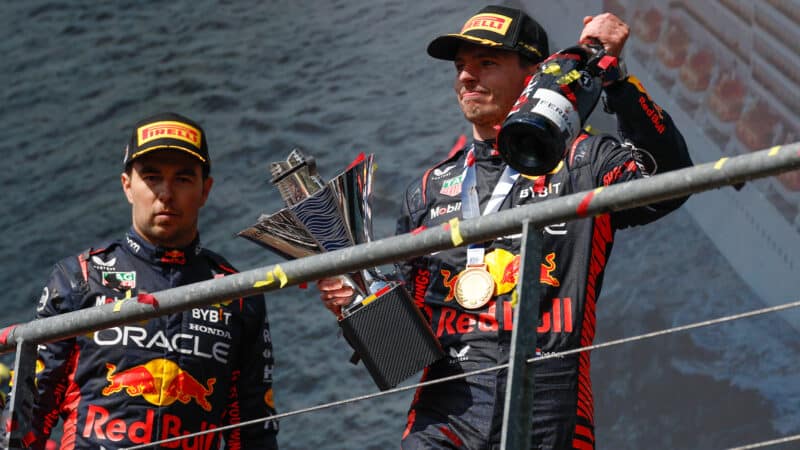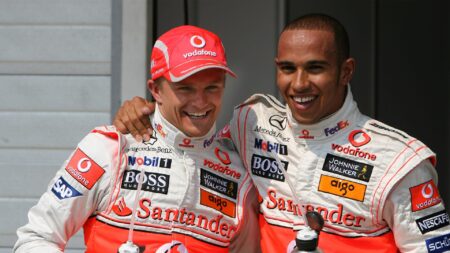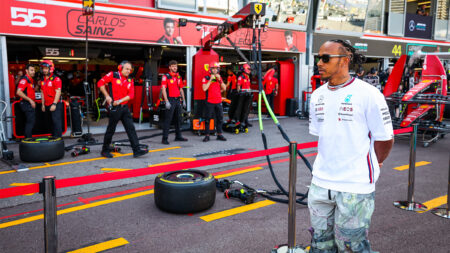Similarly, when Lewis Hamilton was asked how impressed he was with what Verstappen was achieving, he replied that he was no more impressed than he had been by other world champions, before then making the following claim: “In my personal opinion, all my team-mates have been stronger than the team-mates Max has had: I’ve had Jenson, Fernando, George, Valtteri, Nico. I’ve had so many. These guys have all been very, very strong, very consistent – and Max has not raced against anyone like that.”
Such comments from Wolff and Hamilton can come across as bitterness and maybe some of it is; it’s borne of competitive frustration of highly competitive people. But how much truth is in the claims themselves? That’s an interesting one.
Taking Wolff’s suggestion that the Red Bull has been specifically developed around Verstappen, he will know in actuality how the technical team defines the performance envelope – and that the driver then has to access it as best he can. It can also be that the best theoretical performance does not make for an easy drive. “What Max is brilliant at,” says Jenson Button, “is getting the best from a car with an aerodynamic balance which the wind tunnel says is the best. Most drivers find that balance horrible and adjust the car away from that to give them the confidence they need to commit to corners. But Max can just drive it like that.”

Close competition between Hamilton and Rosberg
Grand Prix Photo
Perez’s competitiveness relative to Verstappen has gone in waves in his three seasons alongside: a significant chunk away in ’21, close at the beginning of ’22, lost for most of that mid-season, closer by the end. Then into this season, again very competitive for the first few races before an alarming drop-off in form for much of the mid-season and now again beginning to look more respectable but not at the level of the early season. This pattern aligns with a driver who has made a much slower adaptation to new traits in the car as it has been developed, as the team has sought to get closer to that balance which the wind tunnel says is fastest.
Perez says that for him the RB19 suddenly became a much more challenging drive from Barcelona. “What happened once we got to Barcelona, I can’t explain, what changed so much in the car in how you take the corners,” he told Fox Mexico. “Today I have to drive the car in a very different way.”
It sounds like paranoia, but it’s not. It’s genuine bewilderment at a different set of demands the car is making of him. He’s no longer able to drive in his flow, automatically. What changed on the Red Bull at Barcelona? It got a new floor, that crucial component which plays such a massive part in a car’s competitiveness under these ground-effect regulations. In energising the airflow through the tunnels in a different way, the whole aerodynamic balance of the car changed. It was faster but very different and Verstappen was able to go with it, barely noticing, such is the scale of his talent. He got all there was from it and his flow was hardly interrupted.

Verstappen is frequently in a race of his own
Getty via Red Bull
Perez, in the new car theoretically even faster than the machine in which he was so competitive previously, was not only nowhere near Verstappen’s pace, but he wasn’t even able to out-qualify ostensibly slower cars. He could for sure have lapped the old-spec RB19 faster than he could the new one, even though the new one was in theory faster. Had Perez been the lead driver and Verstappen wasn’t there, the team might have concluded it had gone the wrong way on development and switched back to the old spec before then proceeding in a different direction. That’s the way in which a truly gifted driver sets a development direction – not by him saying, ‘I want a car which is like this, does that etc’ but by him always extracting what is there. But the reason the RB19 is whole chunks faster than the opposition in the first place is that the Red Bull technical team has created a masterpiece, not this simplistic notion that the car is no faster than the others and the difference is it’s being driven faster.




